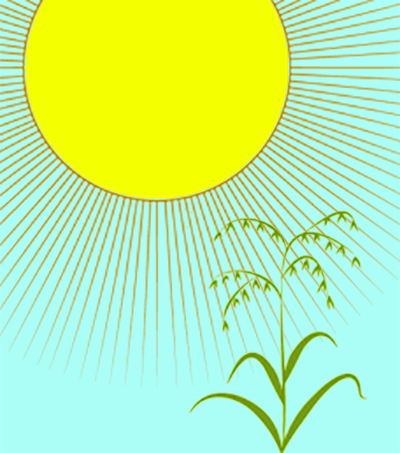

Lesson: Energy Transformations
Duration: Approximately 60 minutes
In this lesson, students think through how energy flows through systems. Students consider energy transfer on a farm, at a barbecue, and with hydroelectrically powered homes. By tracing energy flow through a variety of energy systems, students discover that energy can be transformed and conserved.
Students explore the concept of conservation of energy.
Students are able to describe how energy flows through a system.
Trace energy through systems (30 minutes)
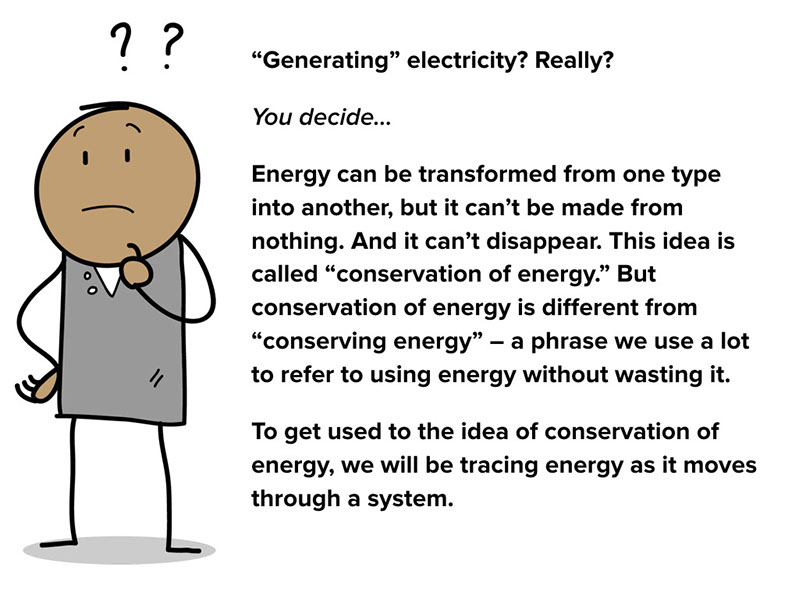
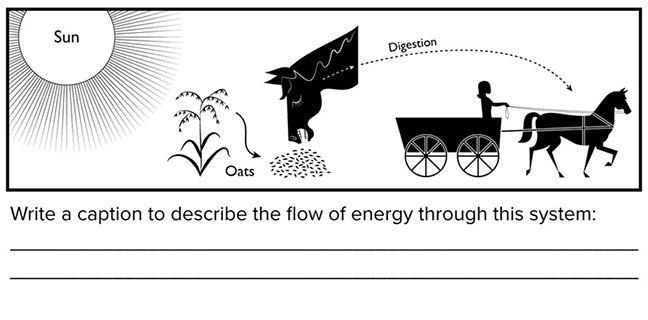
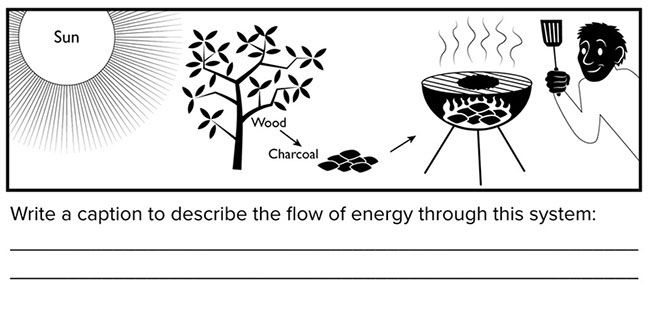
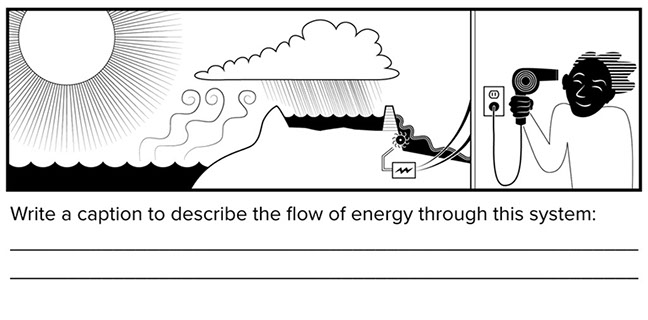
This lesson introduces the concept of conservation of energy. Energy cannot be made from nothing. It can’t be destroyed, but it can be transferred.
The readings present three images in which energy is used: a horse pulls a wagon, charcoal cooks a burger, and a hair dryer is on full blast. For each image, students are asked to “trace” (or follow) the transfer of energy and describe the transfer of energy as a caption for the image.
In the whole class setting, briefly discuss what the first image portrays. If students don’t know where to begin, consider completing the caption for the first image together. It may help to ask students to follow the transfer of energy backwards. You may wish to instruct students to use arrows to indicate how the energy is transferred. This activity may be done individually, in pairs, or in groups.
Systems with stored energy (20 minutes)
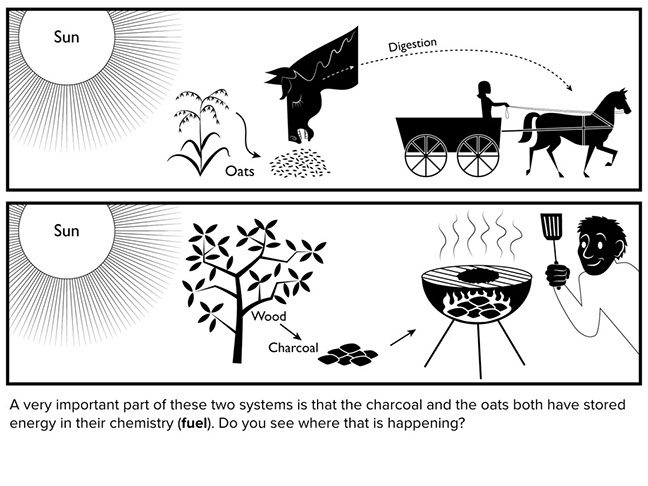
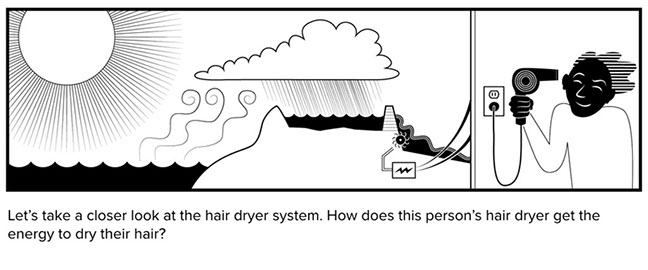
Read the text and emphasize that both the charcoal for the grill and oats for the horse are fuels; they are stored chemical energy. The horse’s digestive system transforms chemical energy into kinetic energy and burning the charcoal transforms chemical energy into thermal energy.
Students are next asked to describe the flow of energy in a hydroelectric power plant. Before students turn to talk about this prompt, it will help to determine what prior knowledge students have about dams, power plants, and turbines. If they have a fair idea of how these work, don’t provide any further clues. If students have little prior knowledge, consider saying something along the lines of:
There are turbines in power plants in dams. Turbines in dams are deep inside. But you have probably seen a turbine. Where would that be?
On a jet plane or a turbo-charged car engine
How do turbines create power?
They rotate rapidly.
How is that power turned into electricity?
Ask students to look at the diagram to offer the answer.
The turbine rotates the generator and the generator produces electricity.
Water sits in a lake behind a dam. Then the water rushes from the lake through the dam and down to a river. Inside the dam, the rushing water flows through a turbine. The energy from the falling water spins the turbine. The turbine then turns a generator and the generators produce electricity. The electricity flows through a power station and then onto high voltage power lines to another power station inside a city. From there, the electricity flows through more power lines and into houses.
Turn and talk: A closer look at a dam as a system (10 minutes)
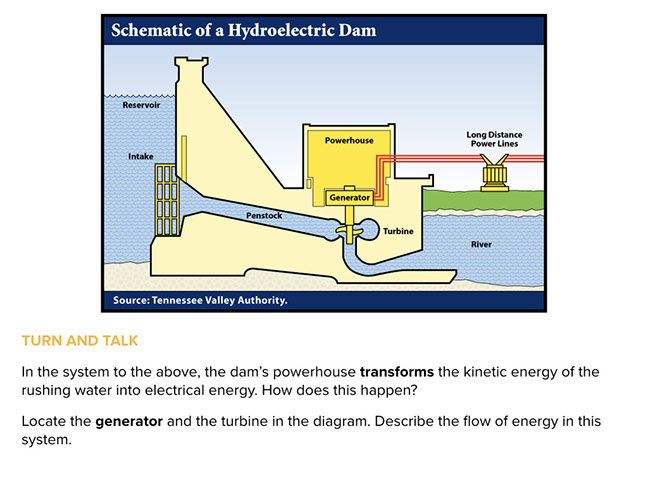
Use this second, more detailed image of a hydroelectric dam system if you want to spend more time studying energy flow in a system.
BETA Version - Please send comments and corrections to info@serpinstitute.org